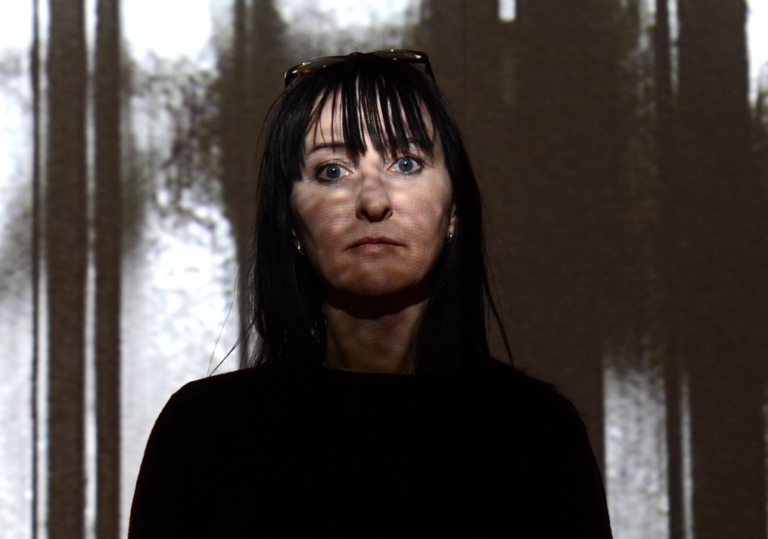URBANA – Artist Vicki Bennett, also known as People Like Us, has worked with audio-visual collages for decades. Bennett’s most recent work, The Library of Babel, was inspired by the 1941 short story of the same name and explore themes of infinity, knowledge, and metaphors through film.
Morning Edition host Kimberly Schofield spoke with Bennett about this performance piece, coming to the Spurlock Museum in Urbana on Monday, November 11.
BENNETT: It reflects the process of searching through information in order to work out what you’re doing as a process and also to finish it as a product. So the Library, we call it ‘Babel.’ Here, you call it ‘Babel.’ It’s funny because I’ve just learned that I’ve been calling it ‘Urbana,’ and it’s ‘Urbana.’
SCHOFIELD: You can call it Urbana. You can call it whatever you want.
BENNETT: Okay, so, “The Library of Babel” is a book by Borges, and it’s all about navigating an endless library where every possible combinations of words and language, including nonsense, exist. So in theory, it’s got everything in it, the library, but because it’s got everything in it, it’s impossible to navigate, because it’s got everything in it. And there’s something about that analogy that is like the creative process, not just with art, but searching for what you’re trying to do, what you’re trying to find, establish, etc. It’s really about my creative process and the way that you think about information. And as an artist, I work with pre-existing materials, so samples of audio and moving image, and so I’m working with a library myself of pre-recorded information, which I then repurpose. So I call myself a redirector and a decomposer. So it’s about my process of searching for material, to find a goal and to find something to make something to present to the public.
SCHOFIELD: On your website, and also just with a description of you as an artist, it says that you do use audio-visual collages. Why did you start using collages? I think that’s a pretty unique way of using art, especially in a performative way.
BENNETT: Because I prefer to acknowledge the sources in terms of the ideas and the trail of information that I’m using. I’m acknowledging, conceptually, actually the sample as being this piece of information. The way that we share our ideas, the way that when we take something in and use it and then give it back out again, it’s kind of like breathing, converting, giving back, but there’s a constant flow of ideas going on. And I like the ideas of using the sample, the encapsulated archive, as a literal example of the way that we use information, change it, transform it, and give it back out again, and that flow of information is essential to everyone in the same way as a library is.
SCHOFIELD: How did you first get inspired to start working with art? Or did you know that art was something that you wanted to pursue as a career?
BENNETT: I don’t know about the word ‘career,’ because that might imply that after doing it this amount of time, that I’d actually be making a huge amount of money if you compare me to any other career, but it’s a vocation. I’ve always known that I wanted to be an artist. When I was a child, I’d make fake radio shows and record things and make tapes, you know, and I’d make all the edits in the tapes. And, you know, I’ve been doing collage since I was a teenager. So it’s always been something in me, and also my philosophical and inquiry in nature fits in with that as well. So it’s always been the way that I think. There’s no choice in it, you know. It’s a vocation. It’s not something I chose. It chose me.
SCHOFIELD: Is there anything specific that you hope people will take away or interpret from this show?
BENNETT: I think a piece of art works really well, if it becomes a dialog between the artist and the observer and listener. As much as I want to imprint what I’ve said on it, I like to have it to be in this sort of umbrella subject where the person brings themself to it and the place where they are in time and space, and what they know and what they don’t. But I don’t it doesn’t require a certain knowledge in anything. It’s a kind of, it’s kind of like a meditation. You go in, you hopefully immerse, and have an immersive experience, and come out hopefully feeling elevated.
The screening will be followed by a discussion and include special guest Hearty White.

